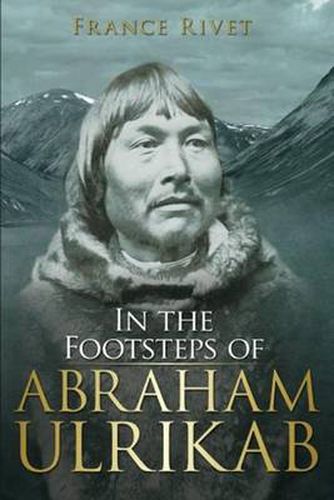Readings Newsletter
Become a Readings Member to make your shopping experience even easier.
Sign in or sign up for free!
You’re not far away from qualifying for FREE standard shipping within Australia
You’ve qualified for FREE standard shipping within Australia
The cart is loading…






This title is printed to order. This book may have been self-published. If so, we cannot guarantee the quality of the content. In the main most books will have gone through the editing process however some may not. We therefore suggest that you be aware of this before ordering this book. If in doubt check either the author or publisher’s details as we are unable to accept any returns unless they are faulty. Please contact us if you have any questions.
The story of Abraham Ulrikab is one of the saddest and most moving stories in Nunatsiavut (Labrador), Inuit and Canadian history. Hoping to improve his family’s living conditions, in August 1880, Abraham agreed to head to Europe to become the latest exotic attraction in the ethnographic shows organized by Carl Hagenbeck, a menagerie owner and pioneer of ‘human zoos.’ Accompanied by his wife, their two young daughters, and a few countrymen, the group of eight was exhibited in zoos in Hamburg, Berlin, Prague, Frankfurt, Darmstadt, Krefeld and Paris. Very soon, the Inuit realized their coming to Europe was a mistake and they longed to return home to Labrador. It is too long until the year is over because we would very much like to return to our country, because we are unable to stay here forever, yes indeed, it is impossible!, wrote Abraham in the diary he kept during his journey. Sadly, none of the Inuit saw their homeland again, all were killed by smallpox less than four months after setting foot in Europe. Based on four years of research, the book In the Footsteps of Abraham Ulrikab finally reveals the truth about the fate of the Inuit’s remains, and brings to light an opportunity to change the course of history: 134 years after the death of Abraham, Maria, Nuggasak, Paingu, Tigianniak, Tobias, Sara and Ulrike, their wish to come home to Labrador could eventually become a reality!
$9.00 standard shipping within Australia
FREE standard shipping within Australia for orders over $100.00
Express & International shipping calculated at checkout
Stock availability can be subject to change without notice. We recommend calling the shop or contacting our online team to check availability of low stock items. Please see our Shopping Online page for more details.
This title is printed to order. This book may have been self-published. If so, we cannot guarantee the quality of the content. In the main most books will have gone through the editing process however some may not. We therefore suggest that you be aware of this before ordering this book. If in doubt check either the author or publisher’s details as we are unable to accept any returns unless they are faulty. Please contact us if you have any questions.
The story of Abraham Ulrikab is one of the saddest and most moving stories in Nunatsiavut (Labrador), Inuit and Canadian history. Hoping to improve his family’s living conditions, in August 1880, Abraham agreed to head to Europe to become the latest exotic attraction in the ethnographic shows organized by Carl Hagenbeck, a menagerie owner and pioneer of ‘human zoos.’ Accompanied by his wife, their two young daughters, and a few countrymen, the group of eight was exhibited in zoos in Hamburg, Berlin, Prague, Frankfurt, Darmstadt, Krefeld and Paris. Very soon, the Inuit realized their coming to Europe was a mistake and they longed to return home to Labrador. It is too long until the year is over because we would very much like to return to our country, because we are unable to stay here forever, yes indeed, it is impossible!, wrote Abraham in the diary he kept during his journey. Sadly, none of the Inuit saw their homeland again, all were killed by smallpox less than four months after setting foot in Europe. Based on four years of research, the book In the Footsteps of Abraham Ulrikab finally reveals the truth about the fate of the Inuit’s remains, and brings to light an opportunity to change the course of history: 134 years after the death of Abraham, Maria, Nuggasak, Paingu, Tigianniak, Tobias, Sara and Ulrike, their wish to come home to Labrador could eventually become a reality!